MetalworkingMetal
Metalworking 101: The Basics of Metalworking
By Kristin Arzt
What is metalworking?
Metalworking is the process of forming and shaping metals to create useful tools, objects, equipment parts, and structures. Metalworking projects generally fall under the categories of forming, cutting, and joining, and may involve techniques such as cutting, welding, casting, and molding. Materials used for metalworking include ferrous and non-ferrous metals such as steel, aluminum, gold, silver, bronze, iron, and more.
The history of metalworking
For thousands of years, precious metals have been worked into objects and valued by ancient civilizations, from Pharaohs in Egypt to Mayans in North America. The oldest known evidence of metalworking is a copper pendant uncovered in Iraq and dates back to 8,700 BCE.
Metalworking has been a way for civilizations to communicate status, religious beliefs, and symbolism through artifacts and a practical way to build tools and structures. It has been practiced by artisans, blacksmiths, alchemists, contractors, and more around the world, all of whom specialize in different aspects of metalworking. Many ancient metalsmithing techniques are still used today, from soldering to welding.
Metallic ores have been extracted from the earth for thousands of years, placing great importance on metalworkers as the source of extricating metals. For example, you can remove iron from mineral-rich sand and mine precious metals like silver from the earth. In modern times, metals have become even more critical to humanity and advancements in technology and transportation. Metalworking is all around us, from the fabrication of electronics to automobiles.
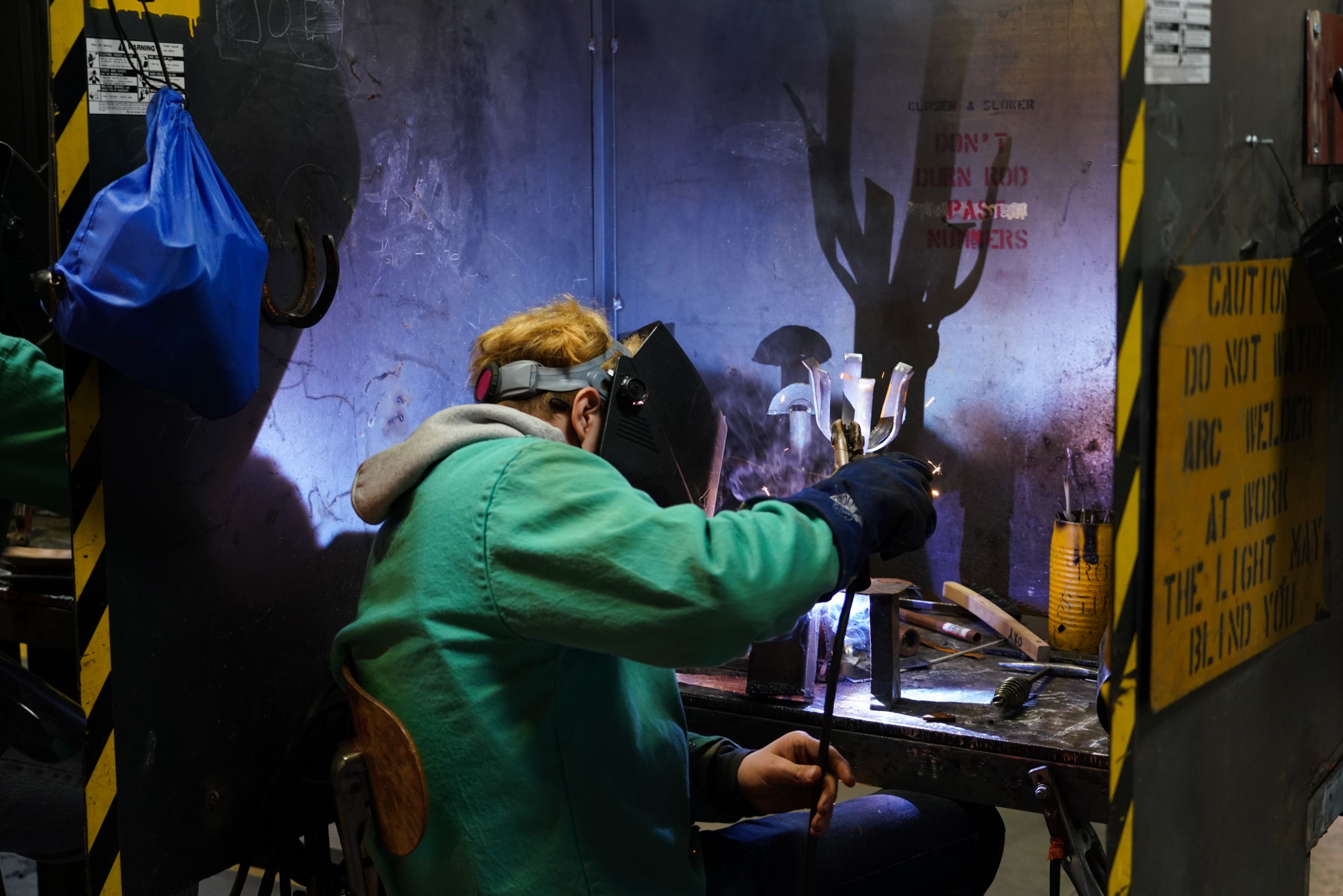
Metalworking techniques
Metalworking techniques create everything from small decorative objects to large-scale structures. While many metalworking techniques will be similar across different materials, the properties of the metal you are working with will greatly impact your work and your desired finished result.
Cutting
Cutting removes material from metal using milling, routing, turning, and technologies like CNC (computer numerical control) machines. Plasma cutters are gas-powered torches powered by argon and hydrogen gas that will remove material and make holes in metal. Cutting is often used in metalworking fabrication shops, automotive repair, and construction.
Joining
Joining is the process of combining several pieces of metal with heat through welding or soldering. Welding is a fabrication process that utilizes a welding machine to join ferrous and non-ferrous metals and works well for larger projects. Soldering is a joining process used to fuse different types of precious metals together by melting solder and works well for small projects. New technology continues to develop as metalworking advances.
Forming
Forming is the process of re-shaping and fabricating metal objects without adding or removing any material. This process is possible through a combination of heat and pressure. Both forging and bending are essential methods for forming metal. When forging metal, you will heat it in the forge, then hammer and bend it into your desired shape. To make a bend or curve in the metal, heat it in the forge, then hold it over the anvil horn and strike it with a hammer to make your desired curve. The English wheel is a tool that allows metalworkers to easily form and shape cold materials, such as aluminum or steel.
Casting
Metal casting is a metalworking process that can be traced back to around 4000 BCE, and it is still used for making sculptures, tools, and jewelry. Metalsmiths have been pouring molten metals into cavities shaped in stone, plaster, sand, and even bone since we learned to melt metals. Metal casting is cost and time effective, and it gives you the ability to make multiples of the same piece.
The common methods for casting metal are lost wax casting and sand casting. Lost wax casting involves carving or shaping your piece in wax, creating a plaster mold around it, then burning out the wax. Sand casting uses sand as the mold material. Sand is combined with a bonding agent, such as clay, and is gated. Then, molten metal is flowed into the mold to create a solid object.
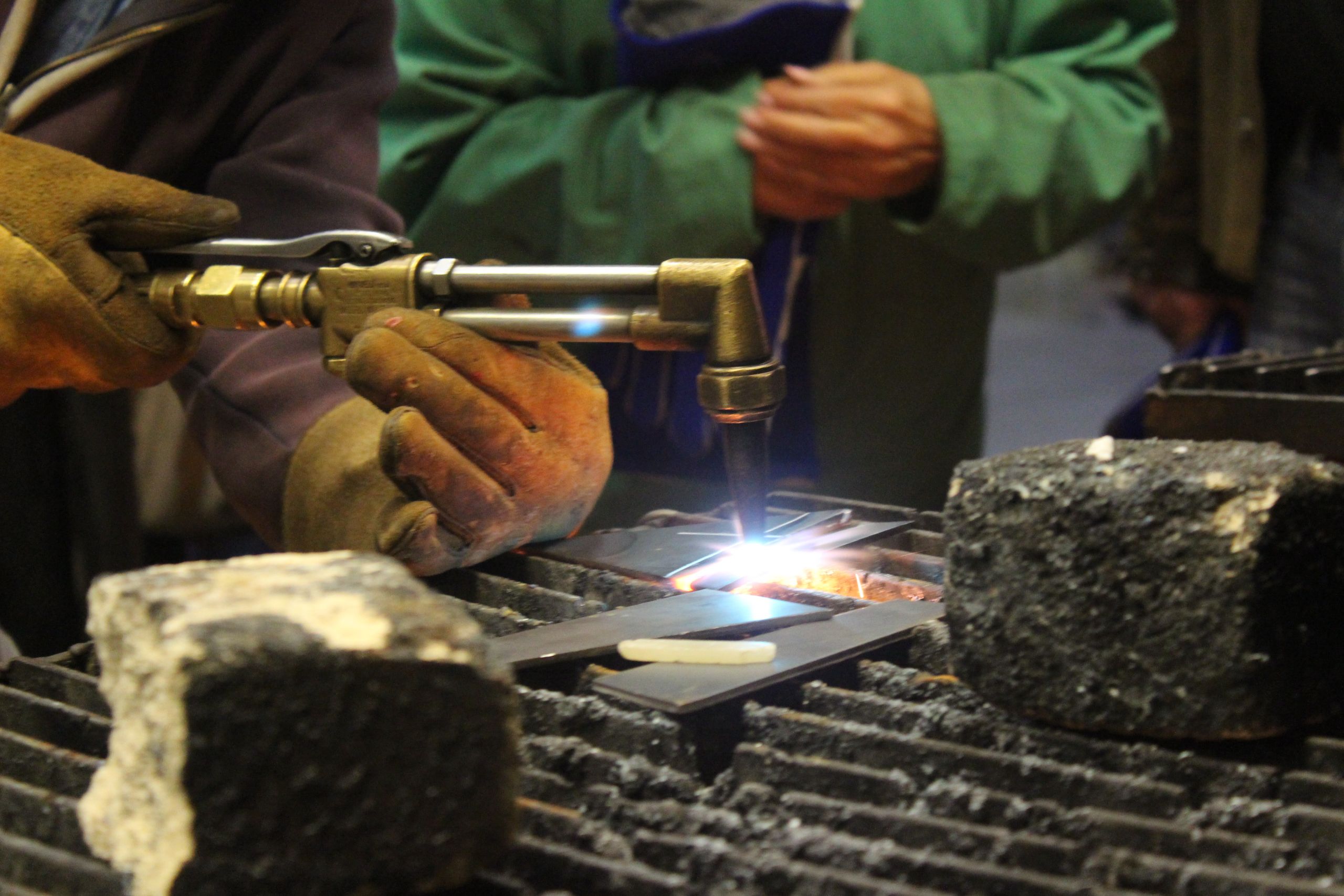
Cutting processes & techniques
Metals must be cut and separated throughout the metalworking process to build structures, make tools, and more. There are numerous metal cutting methods available for metalworking, from using simple handheld tools to a variety of more advanced machines and equipment.
Milling
Milling is the process of removing precise amounts of material from a greater piece. A milling machine rotates a cutting tool and brings the cutting tool into contact with a workpiece. The mill and lathe are the cornerstones of any machine shop and can produce pieces with great precision, repeatability, and accuracy.
Turning
Turning is a machining process in which a cutting tool moves linearly while the workpiece rotates, strategically removing material from the piece. Material can be removed from both the depth and width of the workpiece. Lathes are traditionally used in turning as the leading principal machine tool. As technology has advanced, CNC machines are also used for a more automated process.
Grinding
Grinding uses an abrasive process to remove material from the workpiece, typically in the finishing stages of metalworking. Grinding machines range from hand-held angle grinders to bench grinders, to more advanced CNC machines. These machines can range vastly in size and precision. Grinding creates very fine finishes and precise cuts using an abrasive wheel made from stone, diamonds, or inorganic material.
Drilling
Drilling creates holes in metal using a drill press, handheld drill, or CNC machine. Make sure you lubricate your bits with cutting fluid to prolong the tool’s life and prevent overheating. This ensures a smooth and accurate hole and also prevents chattering or unsafe drilling.
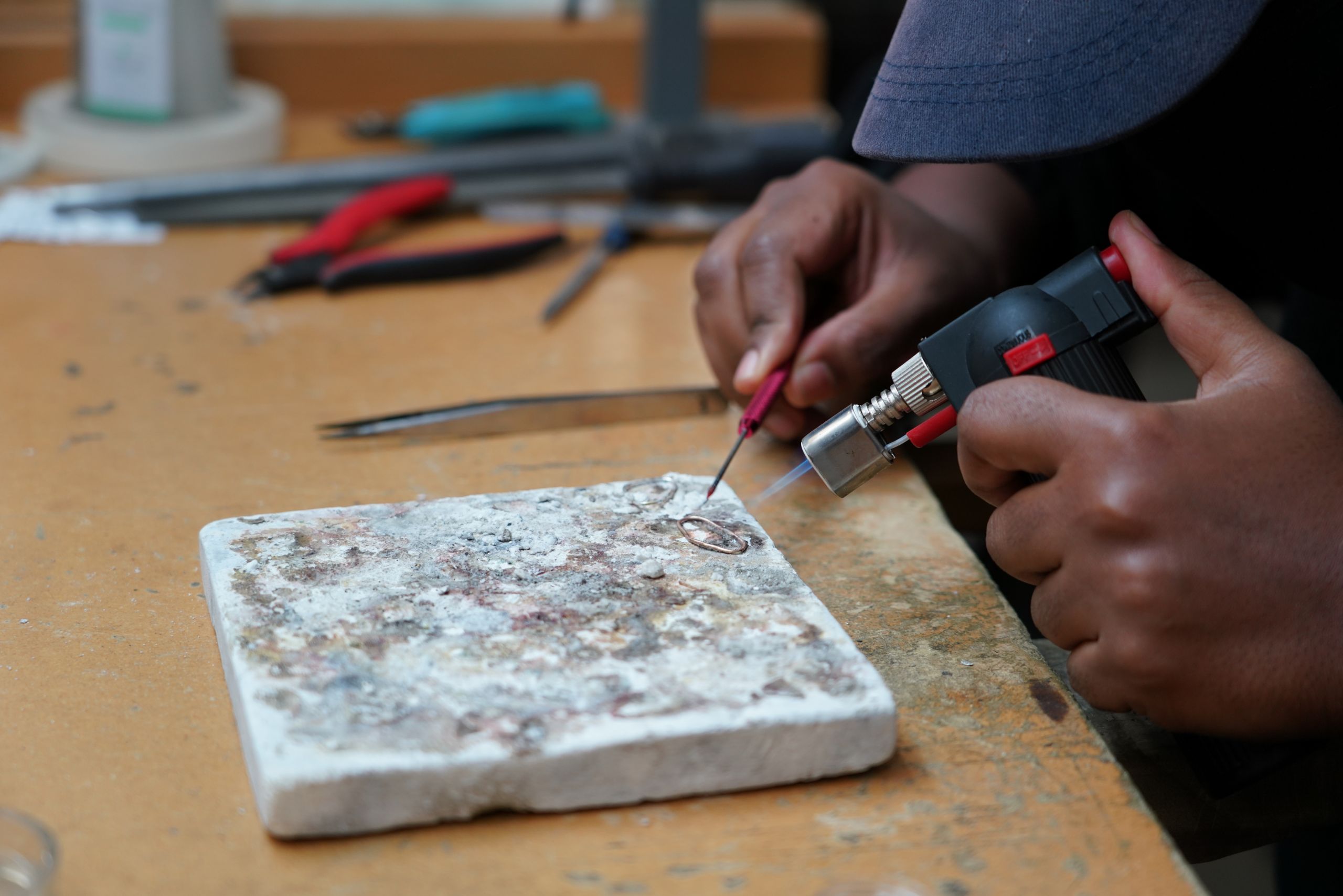
Joining processes & techniques
Joining metals utilized heat and pressure in order to create a larger piece or build a structure. Welding and riveting are excellent joining techniques for larger projects that bear weight, while soldering is a process for joining smaller materials, like jewelry and sculptural objects.
Welding
Welding metal is a fabrication process that joins materials through pressure and heat. Different types of welding work indoors, while others are best applied outdoors. Welding is used to forge swords, build ships, fabricate structures, and more. There are many kinds of welding to choose from, each with specific practical applications. Learn about the different types of welding in this guide.
Soldering
Soldering is another method for joining metals by melting a filler metal on top of the metals being joined to make a reliable electrical bridge. A low-temperature alloy is melted into the joint, fusing the metals into one solid piece. Metalworkers use either an eclectic soldering iron or a gas-powered torch to join precious metals. Soldering is commonly used in plumbing, electronics, and metalwork to fabricate and musical instruments.
Riveting
Rivets are permanent mechanical fasteners that can create kinetic joints in a workpiece or reinforce the structural integrity of a larger object. They are ideal for joining pieces that are lightweight and require high strength. Before welding was used to build framed buildings and structures such as the Eiffel Tower and Sydney Harbour Bridge, rivets were used at the joints to join the metal. Before they are installed, rivets are smooth metallic cylinders with a head on one end.
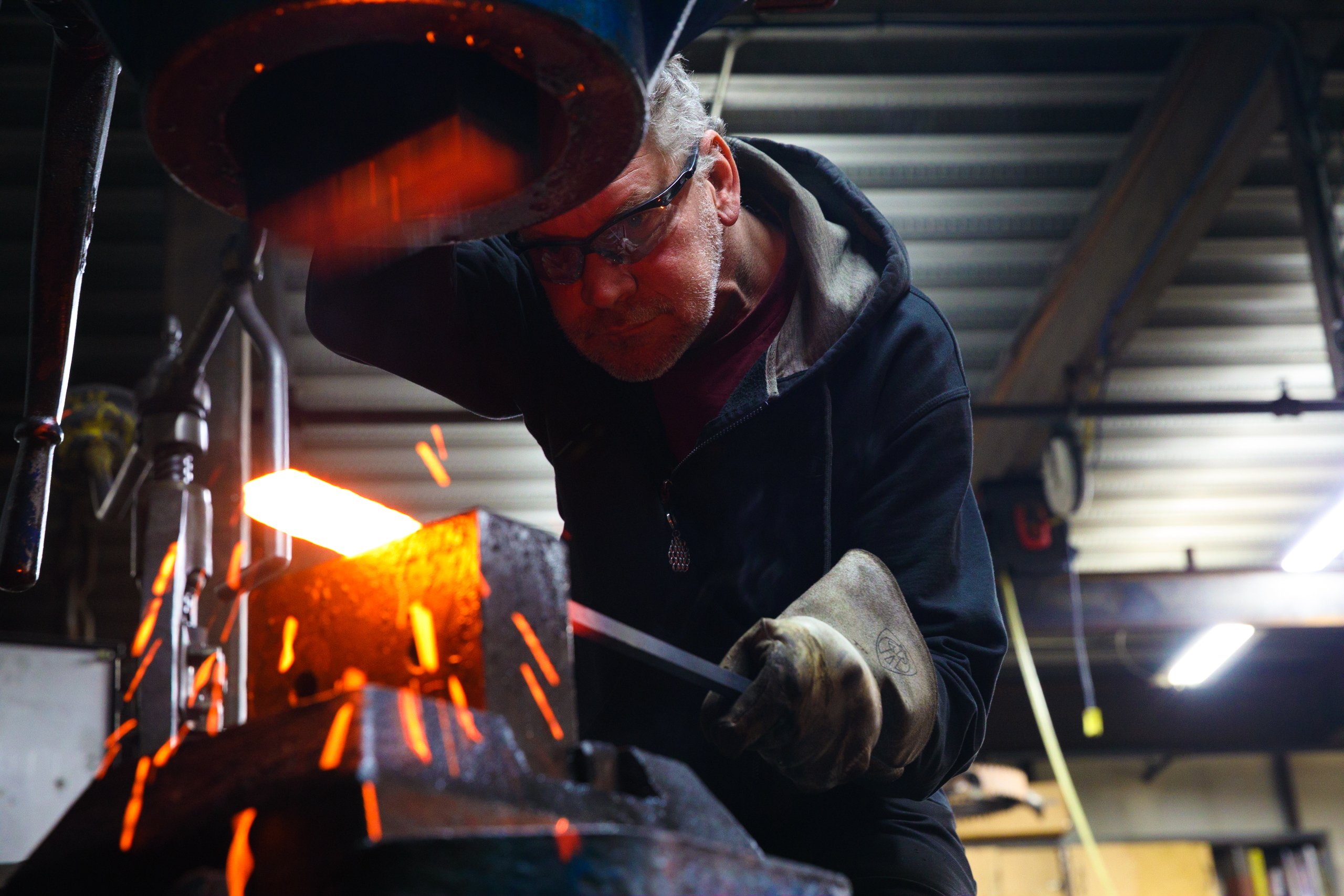
Forming processes & techniques
Reshaping and manipulating the shape of metal can be done when the material is hot or cold. The type of forming process you choose will depend on the metal you are forming, the equipment you have available, and your desired final outcome.
Forging
Forging is one of the oldest metalworking processes used to form and shape metal. The metal is heated in the forge, then hammered and bent into the desired shape. The blacksmith may choose to use a hammer to forge smaller objects or an industrial power hammer for larger projects. Forged metals are incredibly strong, and are typically made of iron and steel.
Roll forming
Roll forming is a process that involves the continuous bending of a long strip of sheet metal through a roll forming mill at room temperature. Unlike other metal bending methods, the roll forming process is inherently flexible, precise, and can form metals up to a quarter of an inch thick. Students practice roll forming in our Sheet Metal Forming class with the master artist Evan Wilcox.
Rolling
Rolling is a metal forming process in which metal stock is passed through a rolling mill to reduce the thickness or to make the thickness uniform. It can be done hot or cold. Hot rolling is typically used to produce sheet metal and larger workpieces. Cold rolling works well for smaller objects, and increases the material’s strength and improves the surface finish, requiring less finishing work.
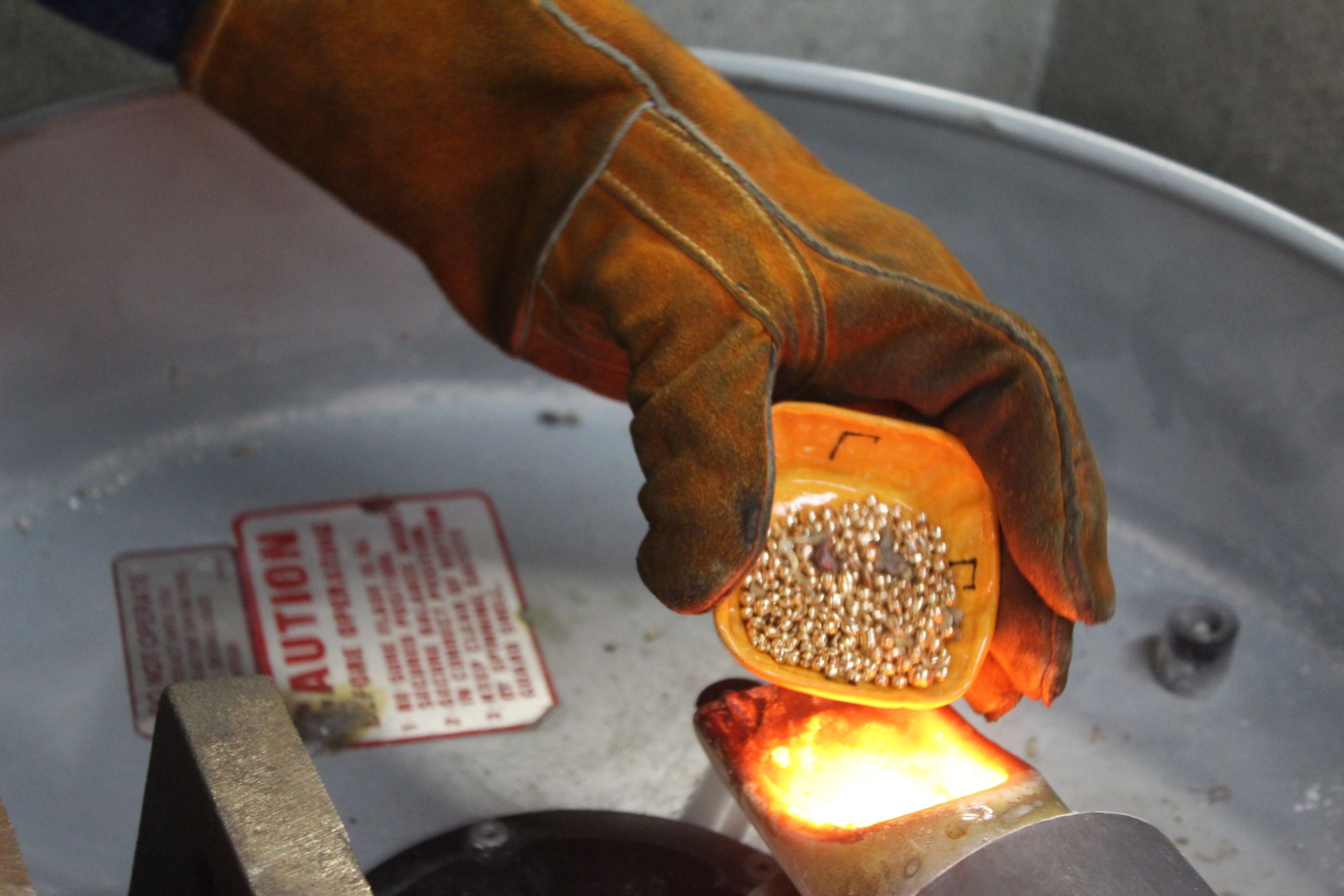
Casting processes & techniques
In the metal casting process, solid metal objects are formed by pouring molten metal into a mold, where it is cooled and extracted from the mold. Metal casting is cost and time effective. Common methods for casting metal are investment or lost wax casting, die casting, and sand casting.
Investment or lost wax casting
Investment casting is a process in which a molten metal is poured into a mold that has been created from a wax model. Was sprues are attached to the mode and a plaster mold is shaped around the wax. The mold and wax are placed in a kiln to burn out the wax. Then, metal is melted and flowed into the plaster mold using a vacuum or centrifugal caster.
Die casting
Die casting is an automated and fast process that forces molten metal into a mold under high pressure. The mold is made from two machined steel dies, and metal is directly injected into the mold at a high speed. Most die castings used alloys with a low melting point, like zinc, copper, aluminium, and magnesium.
Sand casting
Commonly used in foundries, sand casting uses sand as the mold material. The mold is created by combining sand with a bonding agent, such as clay, and is gated. Molten metal is flowed into the mold to create a solid object. Sand casting is the most common metal casting method, and is relatively inexpensive.
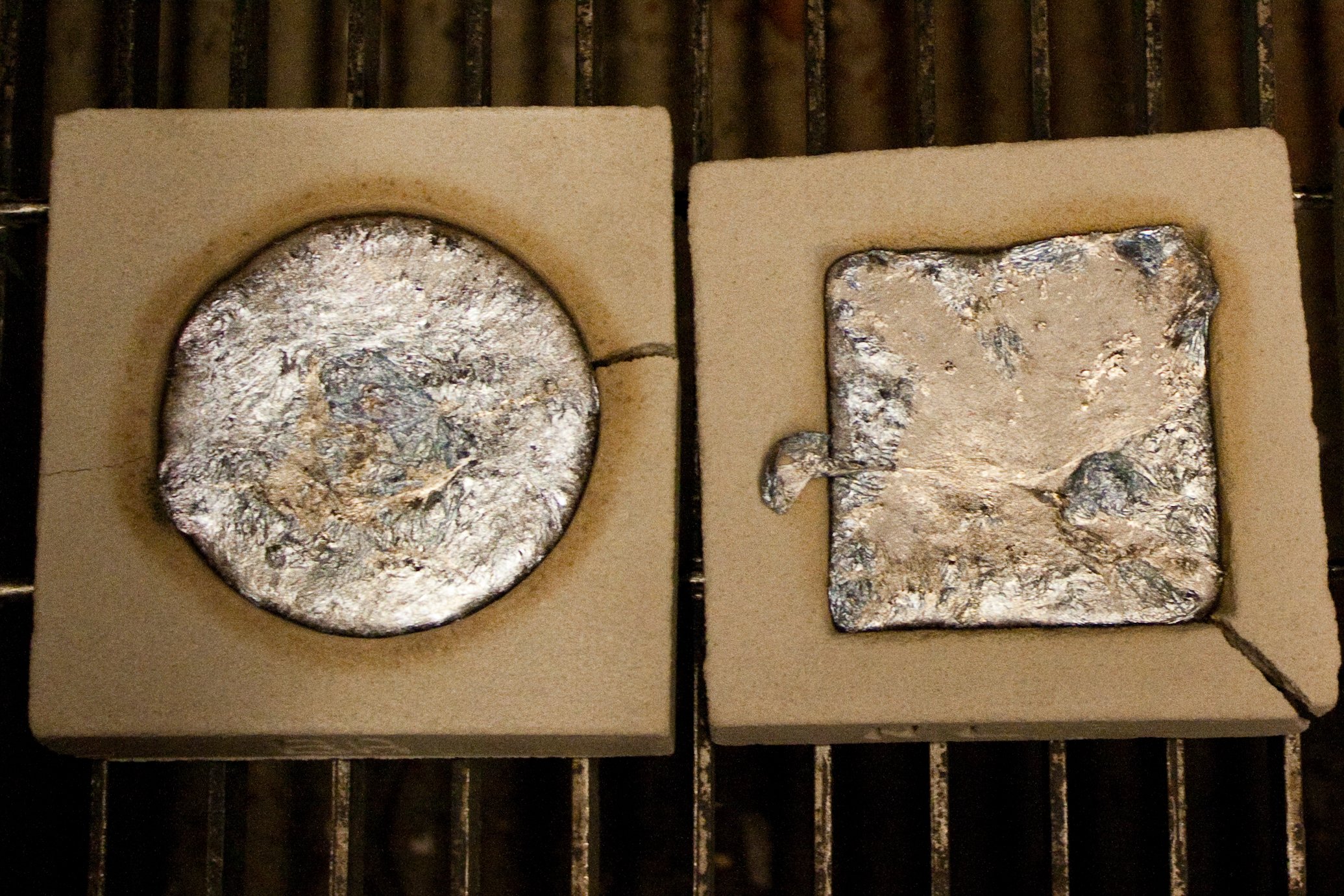
How to learn metalworking
Throughout this guide, we have covered about twenty different metalworking techniques! From casting to welding, there are many possibilities when you are starting to work with metal. Most metalworking requires advanced equipment that you should learn how to use from an experienced professional. While it is possible to learn from methods at home, we always recommend starting with a class to learn safely and set yourself up for success.
Learn metalworking at The Crucible
The Crucible offers metalworking classes in blacksmithing, foundry, jewelry making, machining, and welding. Taking a metalworking class at The Crucible ensures safety under the guidance of a skilled instructor, and is more cost-effective than purchasing all of the necessary equipment. And, most classes are beginner-friendly with no prior experience necessary!
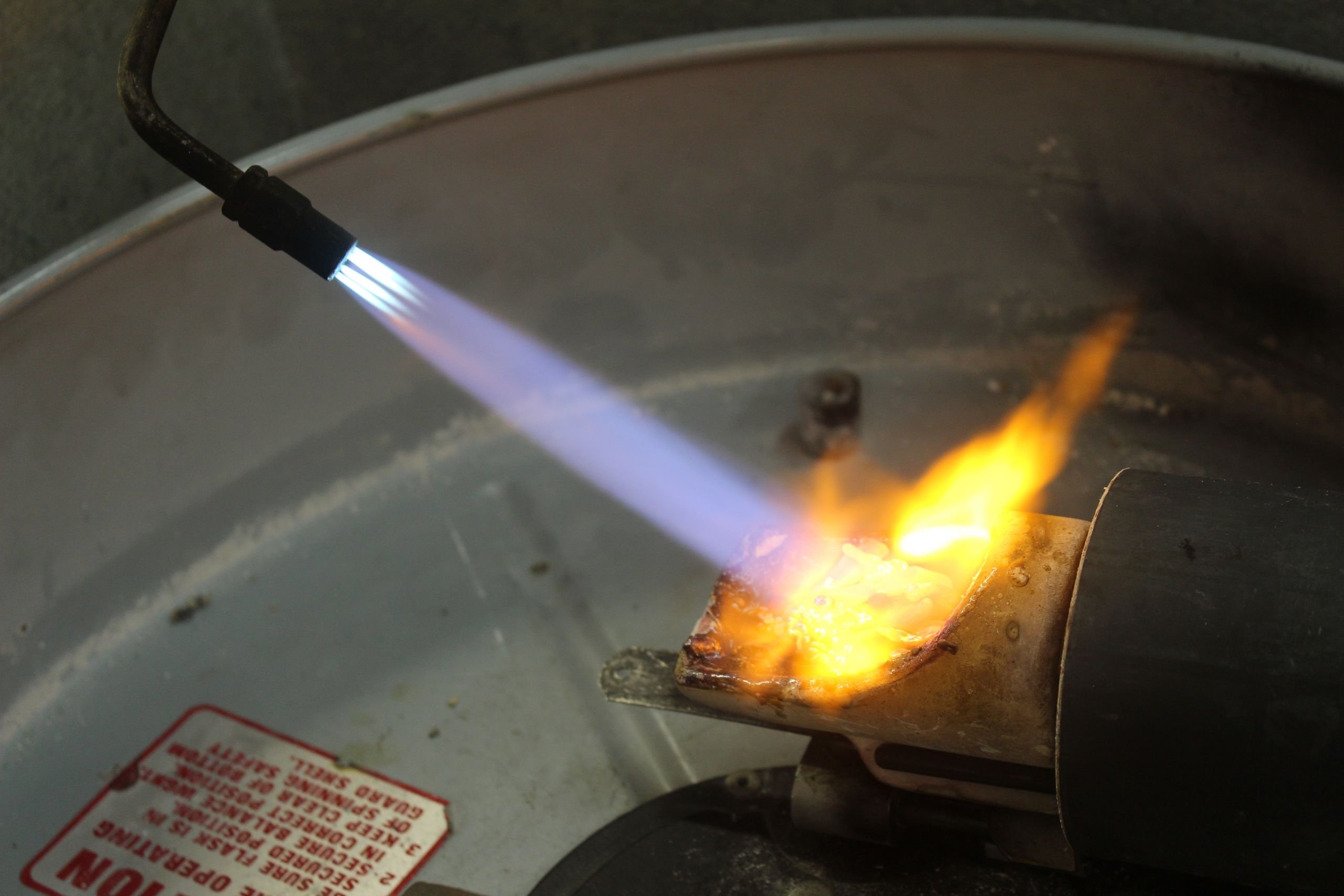
Metalworking FAQs
What tools do you need for metalworking?
Different metalworking processes will require various tools and equipment. Projects might include molding, drilling, casting, welding, cutting, and more. Common tools you may use for metalworking are a bandsaw, hacksaw, welder, angle grinder, belt sander, and drill press. Make sure you fully understand how to use the equipment safely before you begin.
Is it hard to learn metalworking?
How quickly you learn metalworking will depend on the type of metalwork you are interested in, your available resources, the projects you want to create, and more. Metalworking generally takes practice and patience to grasp. There are many factors to learn, from casting temperatures of different alloys to the different types of welding. It takes variable amounts of time to learn the many types of metalworking equipment and machines, from turning on a lathe to joining metals with a welding machine.
What jobs can a metalworker do?
Metalworking is a profession that goes back centuries and spans many different careers. Metalworking jobs include being a welder, blacksmith, silversmith, goldsmith, founder, jeweler, machinist, and more.
Do metalworkers make good money?
A metalworker’s salary depends on the type of work they do, their experience, and where they live and work. According to the U.S. Bureau of Labor Statistics, a sheet metal worker makes an annual average of $50,400, a jeweler makes a median salary of $46,702, industrial ironworkers make about $53,650 per year, and welders earn about $42,490 annually. There are many factors and niche markets within each of these types of metalworking, but this is a broad look at the average salary metalworkers can earn.
What’s the difference between metalworking and blacksmithing?
Blacksmithing is a category and industry under the umbrella of metalworking. Metalworking includes a wide number of methods, which include blacksmithing, along with welding, casting, jewelry making, and more. Blacksmithing utilizes a forge, hammer, and anvil to manipulate metal, primarily iron and steel. Early welding methods are rooted in blacksmithing techniques, dating back to 3000 BCE.



















